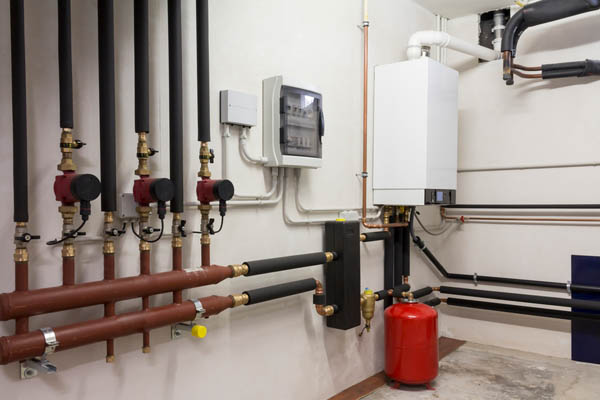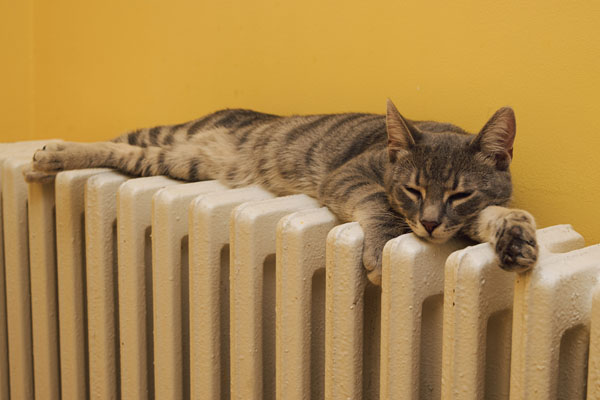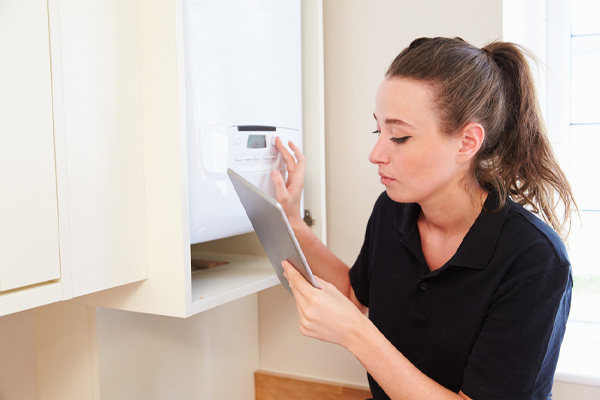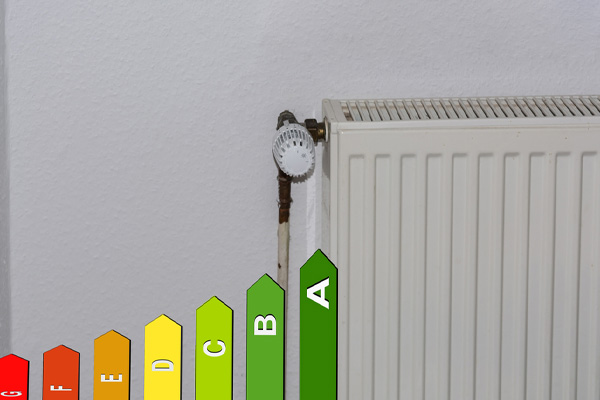What Is The Best Temperature To Set Your Heating Oil Boiler At?

Finding the ideal temperature for your central heating oil boiler can be complex. External temperatures often fluctuate, and hot water requirements vary. This can lead to different boiler temperature settings from one household to another. Identifying the specific type of central heating boiler in your home and understanding typical temperature settings can help you determine the most suitable temperature for your boiler or hot water cylinder. By familiarizing yourself with recommended guidelines, you can effectively heat your home while optimizing efficiency.
Common Types of Central Heating Boilers
Table of Contents

Before making any adjustments to your boiler temperature, it is important to understand the type of central heating boiler you have in your home.
Related Article: What Is The Difference Between A Boiler And A Furnace?
Combi Boilers
Formally known as combination boilers, combi boilers have gained popularity in central heating systems due to their ability to provide both heating and hot water from a single unit. These boilers receive cold water from the main water supply into the unit. Once inside, the boiler burns fuel to generate heat, which is then transferred to the water through a heat exchanger located in the combustion chamber. Because combi boilers use gas or oil for water heating, they offer rapid heating capabilities.
Combi boilers are notably compact compared to other boiler types because they eliminate the need for a separate water tank. The compact design makes them particularly well-suited for smaller homes. However, it is important to note that despite their ability to provide both heating and hot water within one unit, combi boilers cannot simultaneously supply hot water to both taps and central heating. For example, if the central heating is active and someone in your home turns on a hot water tap, the boiler will temporarily divert hot water to the tap while it is in use.
Regular Boilers
A regular boiler is also known as a heat-only or conventional boiler. It comprises three key components:
- The boiler
- A separate hot water cylinder for hot water storage
- A separate cold water tank for storing cold water
Usually, the cold water tank is placed in the attic or loft of the home, using gravity to fill the boiler. It then heats the water and distributes it directly to the radiators in the central heating system. At the same time, it also fills the hot water cylinder to provide hot water on demand.
A conventional boiler is the best choice for larger homes or those with multiple bathrooms and a low-pressure main water supply. Despite their larger space requirements, regular boilers excel at simultaneously supplying hot water and heating.
Related Article: Top 10 Boiler Problems Homeowners Experience
System Boilers

Like regular boilers, system boilers can efficiently provide heating water to radiators and on-demand hot water through a dedicated hot water cylinder. The core components of these boilers include the boiler itself and a hot water cylinder. What sets them apart is their ability to draw water directly from the home’s main water supply. This eliminates the need for a separate cold water tank.
System boilers are particularly well-suited for larger homes with substantial hot water demands. They offer advantages such as:
- They take up less space.
- Versatile installation options compared to regular boilers.
Key components of system boilers are integrated within the unit. However, it is important to remember that system boilers still need space for a hot water cylinder. If the main water supply has low pressure, the home’s overall water flow rate will be affected.
Related Article: What To Look For In A Boiler Repair Company
Central Heating Boiler Temperature Settings
Setting the temperature for your central heating boiler is not a one-size-fits-all approach. The ideal boiler temperature can vary based on several factors, including weather conditions and personal preferences. Adjust the boiler temperature within a specified range to ensure it operates efficiently and does not overheat.
Recommended Temperature Settings

The temperature settings for your central heating water and the hot water cylinder should be adjusted separately.
For heating water, modify your boiler’s high and low temperature settings based on seasonal changes. Lower boiler temperatures, typically ranging from 120℉ to 160℉, are more efficient and comfortable during the summer months. Higher settings within the range of 180℉ to 200℉ are better suited for winter. However, it is essential to avoid exceeding 200℉, as temperatures beyond this point can lead to boiler overheating, potentially causing leaks or raptures.
On the other hand, the temperature settings for your hot water cylinder can remain relatively consistent year-round. The recommended temperature range for hot water cylinders is usually between 140℉ and 150℉. It is crucial to maintain a minimum boiler water temperature to ensure safety. Water temperatures between 77℉ and 112℉ can foster the growth of Legionella bacteria. This can lead to Legionnaire’s disease, a form of pneumonia. To prevent this risk, keep the heating cylinder water temperature above 124℉, as advised by the CDC.
Tips for Boiler Energy Efficiency

Use your home temperature control systems for optimal home heating efficiency and energy conservation. Using programmable and room-specific thermostats provides precise temperature management for each area in your home. For instance, your bedroom should maintain a cooler temperature compared to other rooms to promote a comfortable and conducive environment for a restful night’s sleep.
Smart temperature controls will automatically adjust the temperature in your home. It also allows you remote access via a mobile device. These features will allow you to change your temperature settings and lower heating consumption when you are not at home. Setting the temperature to fluctuate four to five degrees at various times of the day can enhance heating efficiency. Maintaining a cooler indoor environment while you are away also contributes to cost-effectiveness.
Related Article: What To Look For In A New Oil Boiler For Your Home
Call Hart Home Comfort For Comprehensive HVAC Solutions

At Hart Home Comfort, we are proud to deliver top-tier heating and cooling solutions throughout Nassau County, Suffolk County, and Queens, New York. Our team consists of elite certified technicians well-versed in offering exemplary HVAC tune-ups, repairs, replacements, and more. You can trust them for proficient and accurate servicing of your HVAC units.
We pride ourselves on presenting the most cost-effective HVAC services in the vicinity. Our maintenance solutions are designed to enhance your comfort, boost energy efficiency, and curtail your home’s heating and cooling expenses. Should there be a need for HVAC mends or a new system, our team is adept at recommending the optimal choice tailored to your requirements and budget. We stand by the quality of our work, providing a guarantee for your peace of mind. To book a service slot, contact Hart Home Comfort now. We also extend complimentary in-home evaluations.
For any questions about what Hart Home Comfort can do for you, give us a call today. Click here to contact us now or call us at (631) 667-3200 to find out more! Click the link to view our service area.